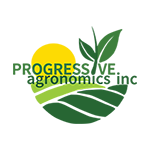Let’s begin by addressing the term “pigweed.” Typically, when referring to pigweed, the first thing you need to consider is your location. If you are in Central Illinois, then most likely you are referring to waterhemp. If you are in West Tennessee, then pigweed most likely means Palmer amaranth (Palmer). Pigweed is a general term that can be used to describe most amaranthus species. Palmer amaranth is Amaranthus palmeri and tall waterhemp is Amaranthus tuberculatus (=A. Rudis). You can see the confusion. In 2016, The Weed Science Society of American ranked waterhemp and Palmer in the top three most troublesome weeds for corn and soybean production; however, for the purpose of this article, “pigweed” will be considered Palmer.
A History of Resistance
Prior to glyphosate resistant crops, many farmers relied heavily on ALS inhibitors (Group 2) to control pigweed throughout much of the country. This reliance on ALS chemistries also brought heavy selection pressures for that herbicide class. In 1993, Kansas row crop farmers saw their first case of ALS resistant pigweed, and it quickly spread throughout much of the country. Fast forward to 1996 and the release of Roundup Ready® soybeans, the ALS resistant pigweed problem was answered, at least for a few years.
In 2005, glyphosate resistant pigweed was documented in North Carolina and the battle continued to rage. Since then, pigweed has become the “driver” behind most herbicide programs throughout the country. Through this evolution, it has gained resistance to eight sites of action (SOA): ALS (Group 2), microtubule inhibitor (Group 3), synthetic auxin (Group 4), photosystem II inhibitor (Group 5), EPSP synthase inhibitor (Group 9), PPO inhibitor (Group 14), long chain fatty acid inhibitor (Group 15), and HPPD (Group 27). A few examples of these active ingredients include: chlorination, trifluralin, 2,4-D, atrazine, glyphosate, fomesafen, S-metolachlor, and mesotrione, respectively.
The Latest Three Herbicides
The title of this article is Pigweed Adds Three Herbicides to its Resistance List.” If you’re still reading and asking yourself, “well, what are they?” I just gave you the answer – 2,4-D, dicamba, and S-metolachlor. Arkansas officially confirmed resistance to S-metalochlor (Dual II Magnum) in 2016 and Kansas officially confirmed resistance to 2,4-D in 2018 (Heap, 2019). Kansas weed scientists are currently conducting research to confirm if their populations are also cross-resistant to dicamba, another Group 4 synthetic auxin.
A Multi-Faceted Approach to Control
It is important to note that no population has yet been identified as cross-resistant to all eights SOAs at the same time, but five-way cross-resistance has been confirmed in Arkansas. Because resistance has been confirmed, or is suspected, to several of the primary ingredients for new soybean technologies, a multi-faceted approach to control this weed will be needed. Although herbicides will be our primary method of control, we can no longer only rely on herbicides to stop pigweed. I would encourage farmers to think of integrated pest management approaches moving forward. Some of these include narrow rows, cover crops, or earlier planting to achieve canopy coverage sooner.
If you want to develop a more robust weed fighting strategy for your fields, don’t hesitate to reach out to your local Beck’s representative.
~Austin Scott, M.S., CCA – Field Agronomist/Herbicide Specialist
